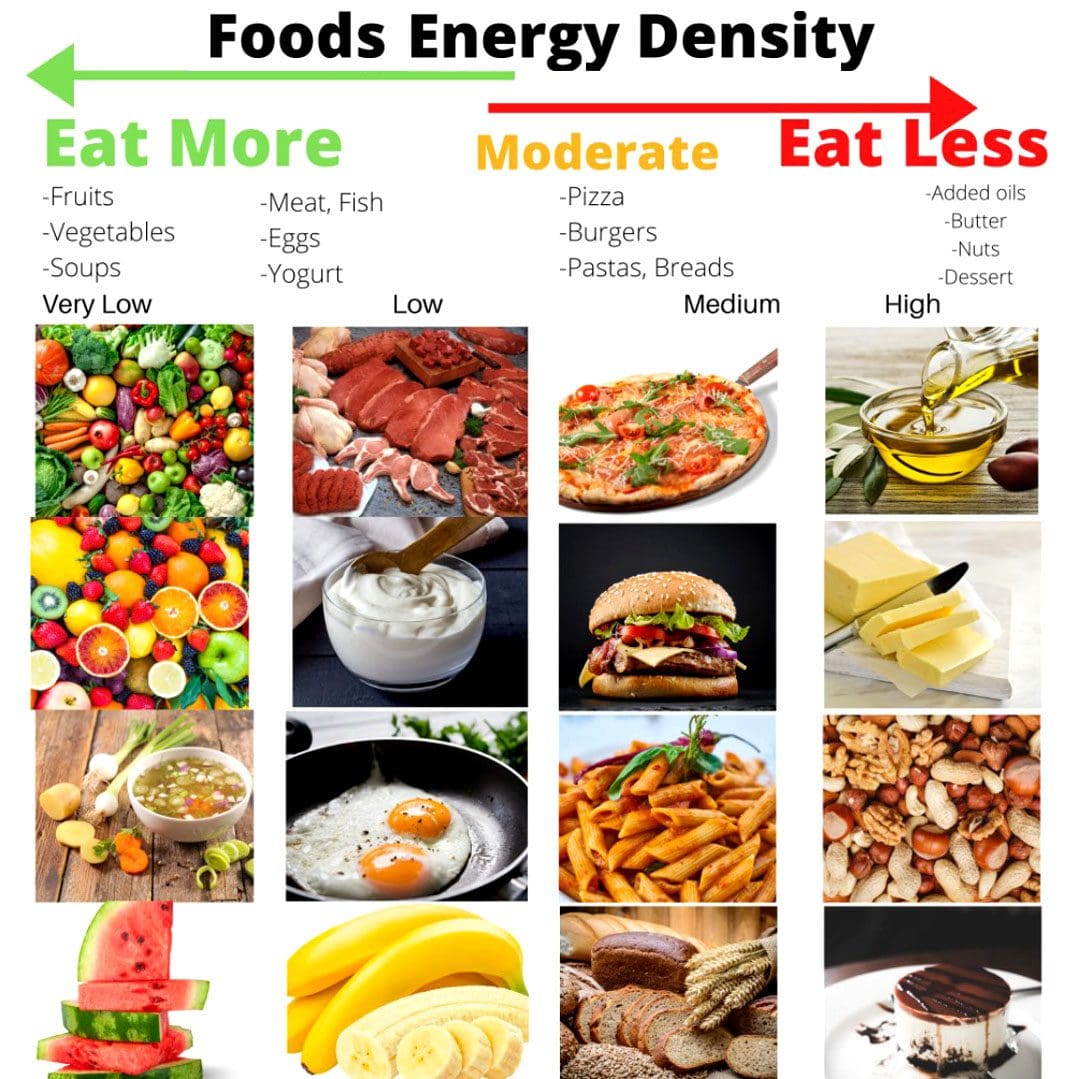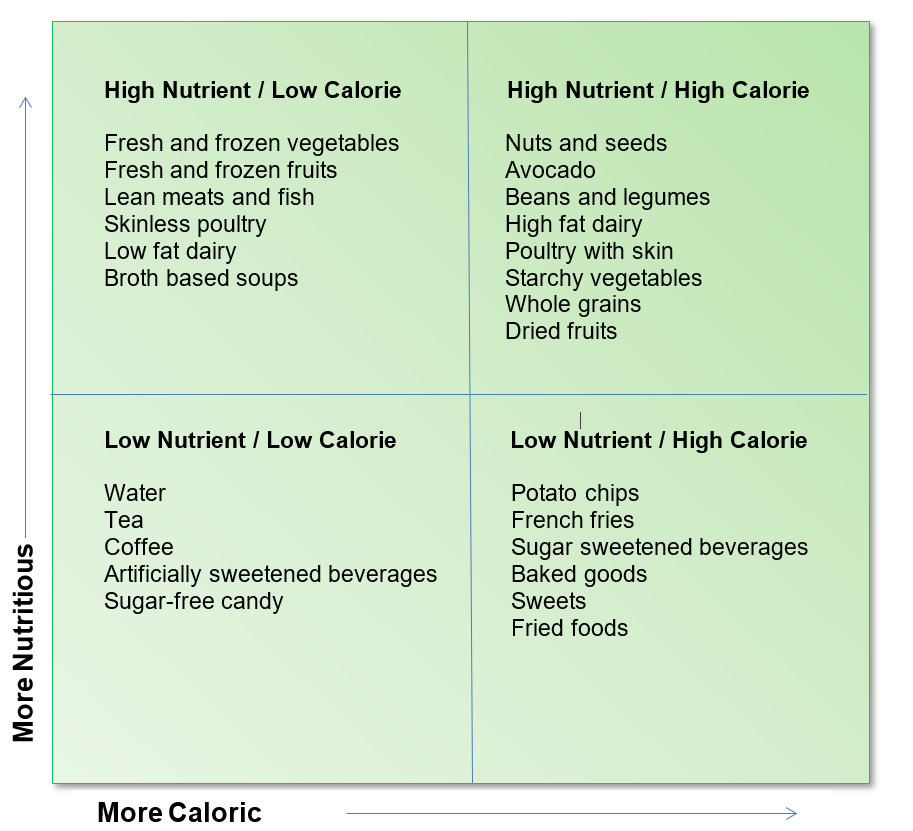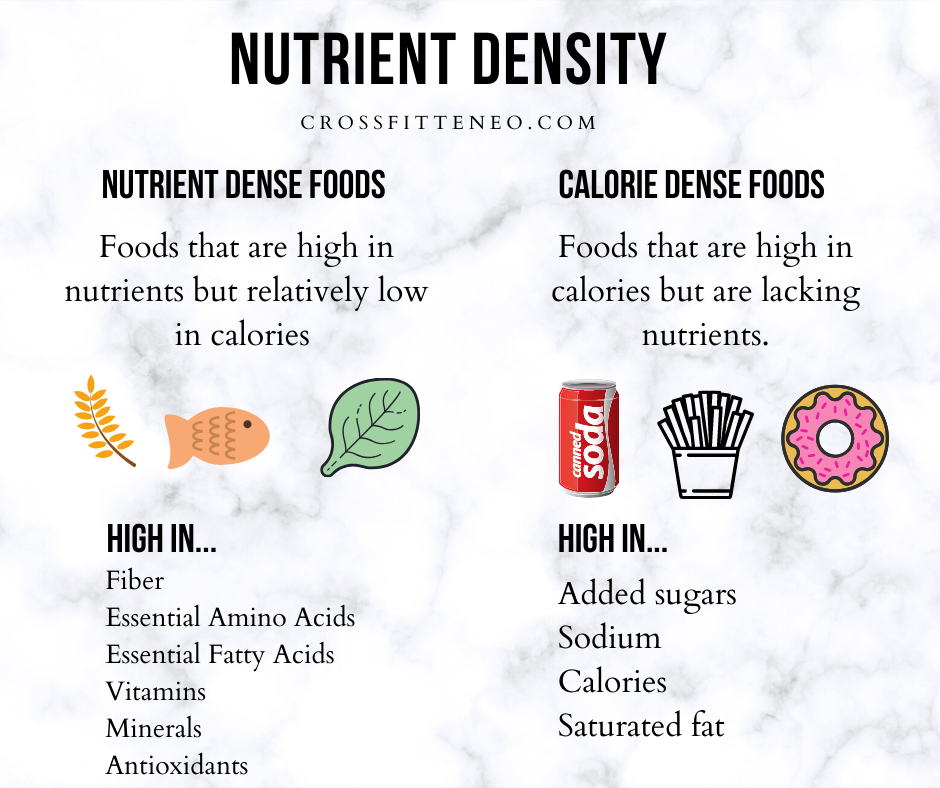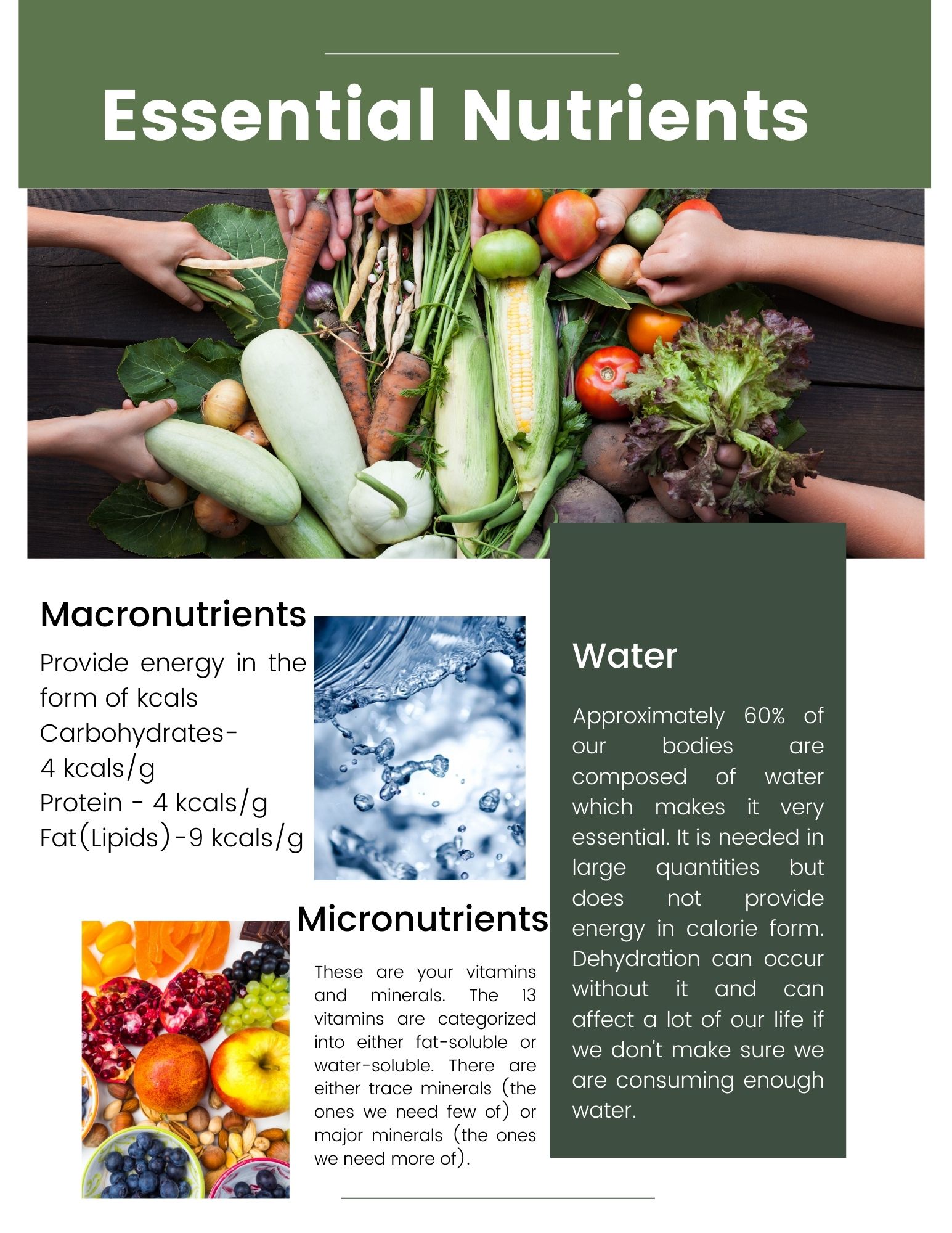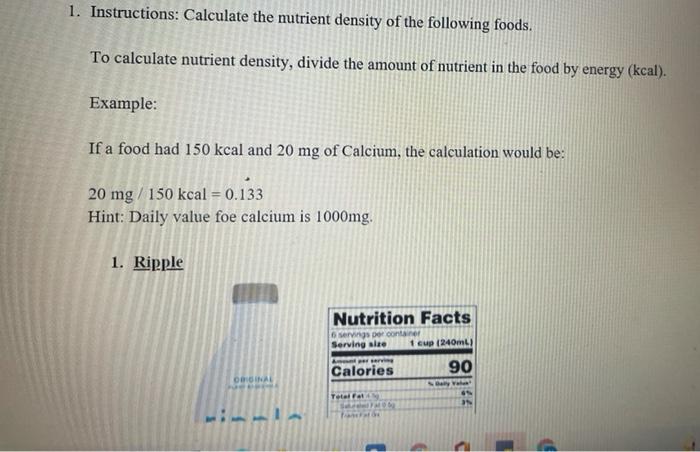Which Of The Following Nutrients Is The Most Energy Dense

In the ongoing quest for optimal health and nutrition, a fundamental question often arises: which nutrient provides the most energy per gram? This question is crucial for individuals aiming to manage their weight, optimize athletic performance, or simply understand the nutritional value of their food.
The answer is fat. Fat, also known as lipids, provides approximately 9 calories per gram, more than double the energy density of carbohydrates or protein, which both provide around 4 calories per gram. Understanding this difference is vital for making informed dietary choices.
The Energy Density of Macronutrients
Macronutrients are the essential nutrients our bodies need in large quantities: carbohydrates, proteins, and fats. Each plays a unique role in providing energy and supporting various bodily functions.
Carbohydrates are the body's primary source of energy. They are broken down into glucose, which fuels cells.
Proteins are essential for building and repairing tissues. While they can be used for energy, they are primarily utilized for other critical functions.
Fats, as mentioned earlier, are the most energy-dense macronutrient. They play crucial roles in hormone production, cell structure, and the absorption of certain vitamins.
Breaking Down the Numbers
The energy density of each macronutrient is measured in calories per gram. A calorie is a unit of energy, often used to describe the energy content of food.
Fats: Approximately 9 calories per gram.
Carbohydrates: Approximately 4 calories per gram.
Proteins: Approximately 4 calories per gram.
These figures highlight the significant difference in energy density between fats and the other two macronutrients. This difference has important implications for weight management and overall health.
Implications for Weight Management
The high energy density of fat means that consuming even small amounts can contribute significantly to calorie intake. This is why high-fat foods are often associated with weight gain.
However, it's important to note that not all fats are created equal. Unsaturated fats, found in foods like avocados, nuts, and olive oil, are generally considered healthy fats.
Saturated and trans fats, found in processed foods and some animal products, should be consumed in moderation, as they can contribute to heart disease.
For individuals aiming to lose weight, understanding the energy density of different nutrients is crucial. By prioritizing lower-calorie, nutrient-dense foods, such as fruits, vegetables, and lean proteins, individuals can reduce their overall calorie intake without feeling deprived.
The Role of Energy Density in Athletic Performance
Athletes often require higher calorie intakes to fuel their training and performance. While fats are a concentrated source of energy, they are not necessarily the best choice for immediate energy needs during intense exercise.
Carbohydrates are the preferred fuel source for high-intensity activities. They are quickly broken down and provide the energy needed for muscle contractions.
Fats, on the other hand, are a more sustainable energy source for longer-duration, lower-intensity activities. They provide a steady stream of energy over time.
The optimal balance of macronutrients for athletes depends on the type and intensity of their training. Consulting with a registered dietitian or sports nutritionist can help athletes determine the best dietary plan to meet their individual needs.
Beyond Energy Density: The Importance of Nutrient Density
While energy density is an important consideration, it's crucial to remember that it's not the only factor that determines the nutritional value of food. Nutrient density, the amount of nutrients per calorie, is also essential.
Foods like fruits and vegetables are low in energy density but high in nutrient density. They provide essential vitamins, minerals, and antioxidants without contributing excessive calories.
Processed foods, on the other hand, are often high in energy density but low in nutrient density. They provide a lot of calories but lack essential nutrients.
A balanced diet should prioritize nutrient-dense foods while limiting the intake of energy-dense, nutrient-poor foods.
Conclusion
Fat is the most energy-dense nutrient, providing approximately 9 calories per gram. Understanding the energy density of macronutrients is essential for weight management, athletic performance, and overall health.
However, it's crucial to consider nutrient density as well. Prioritizing nutrient-dense foods, such as fruits, vegetables, and lean proteins, is key to maintaining a healthy and balanced diet.
By making informed dietary choices, individuals can optimize their health and well-being.



